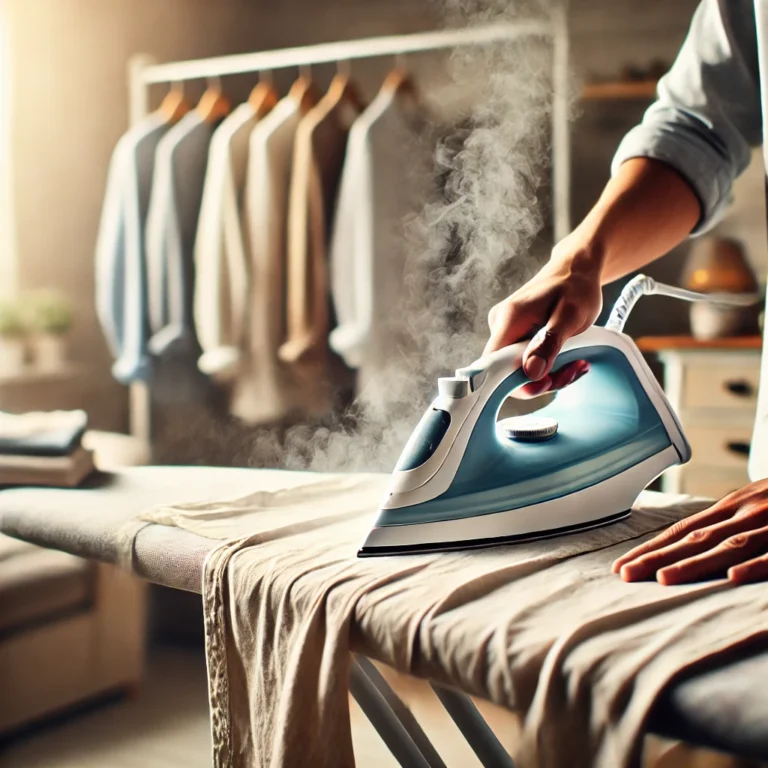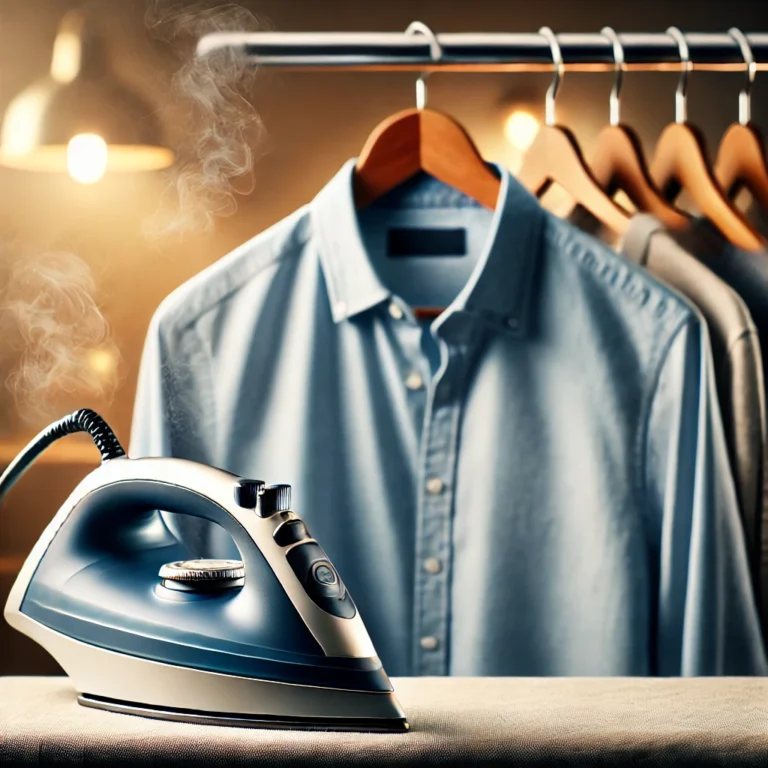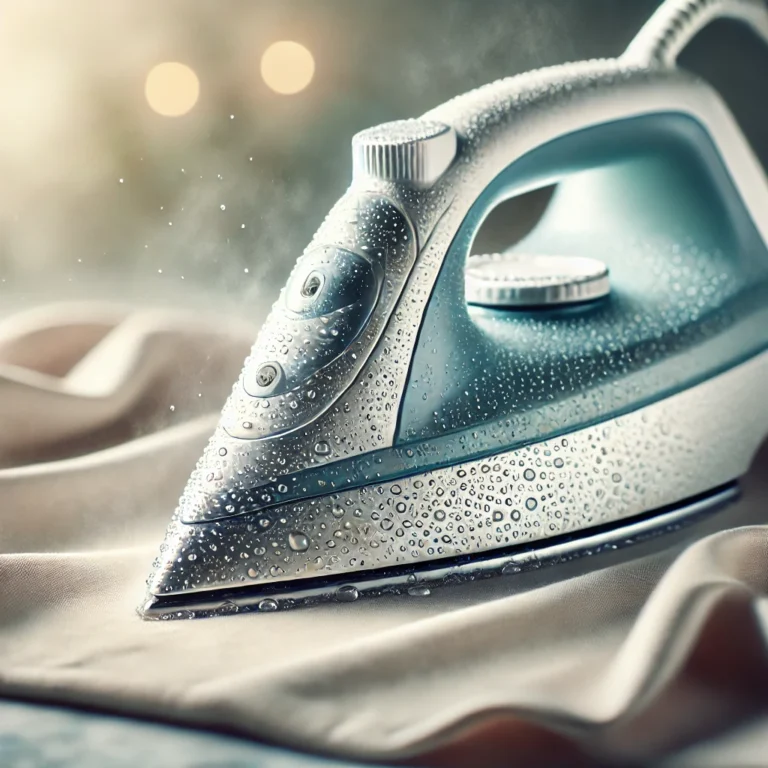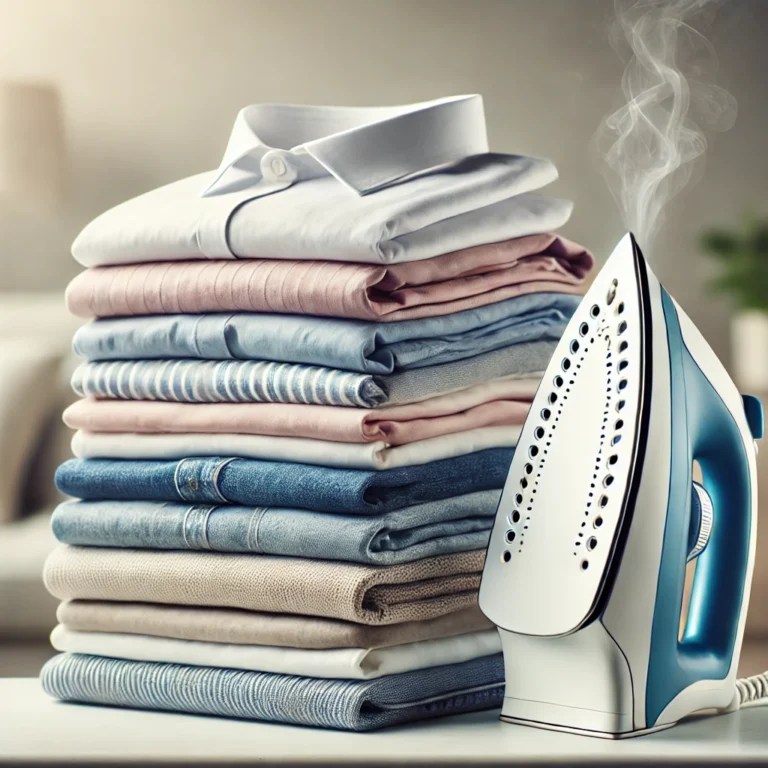Steam Iron vs. Garment Steamer: Which is Best for Your Wardrobe Needs?
Keeping clothes wrinkle-free and looking sharp is essential, whether it’s for everyday wear or a special occasion. When it comes to getting the job done, two popular tools come to mind: the steam iron and the garment steamer.
Both devices serve similar purposes but operate differently, each with unique advantages and ideal use cases. This article dives into the essential differences between steam irons and garment steamers, covering their benefits, limitations, and suitability for different fabrics and lifestyles, helping you decide which one is best suited for your needs.
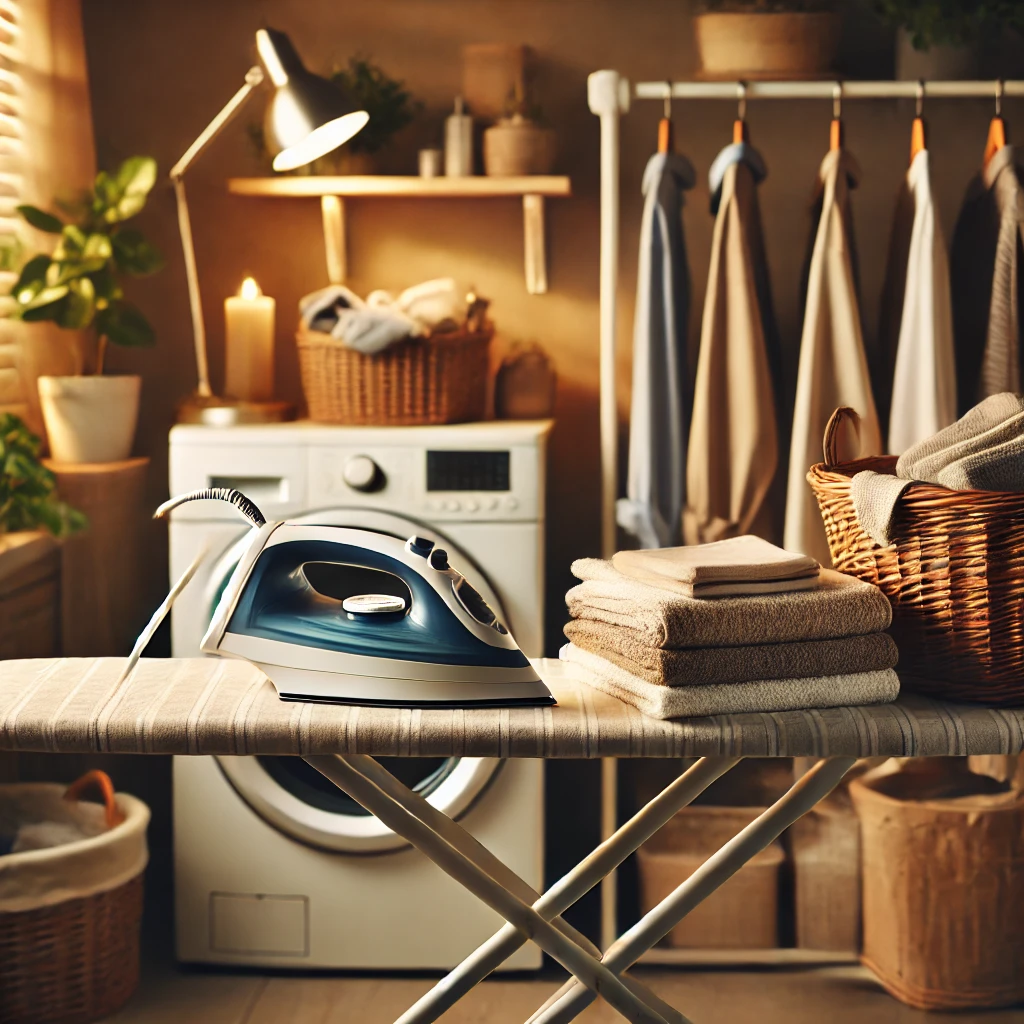
Understanding the Basics: How Do They Work?
Steam Irons: A Traditional Powerhouse
The steam iron has long been the go-to appliance for pressing clothes. It combines heat and steam to smooth out wrinkles by applying pressure directly to the fabric. This tool works by heating water in a built-in reservoir, which releases steam through small holes on the soleplate (the flat metal surface of the iron) when pressed against the fabric. The combination of steam and pressure effectively flattens wrinkles, creating crisp, clean lines on items like shirts, trousers, and uniforms.
Steam irons are particularly effective on thicker fabrics, such as cotton and linen, where strong, direct pressure is needed. They often come with settings for temperature control, which allows users to adjust the heat based on the type of fabric they’re ironing. This versatility makes steam irons highly effective but requires users to pay close attention to the settings and understand the right approach for each fabric type.
Garment Steamers: A Modern Alternative
Garment steamers, also known as clothes steamers, offer a simpler, gentler method for removing wrinkles. Instead of pressing down on fabric, steamers work by releasing a continuous stream of hot steam directed onto the fabric, relaxing the fibers and allowing wrinkles to naturally fall out. Garment steamers are typically held upright and work best for lightweight fabrics or garments with delicate details.
Unlike the steam iron, garment steamers are designed to be portable and easy to use on hanging clothes, making them ideal for quick touch-ups and for items that are challenging to press on an ironing board, such as long dresses or intricate clothing with pleats. This convenience and gentler approach have made garment steamers increasingly popular, especially among those with busy schedules or a high volume of delicate garments in their wardrobes.
Key Differences Between Steam Irons and Garment Steamers
Pressure and Direct Contact
One of the most fundamental differences between a steam iron and a garment steamer is how they interact with fabric. Steam irons require direct contact and apply physical pressure, which is particularly effective at creating sharp creases in shirts, pants, and formal wear. Garment steamers, however, rely solely on steam, which means they do not require direct contact. This lack of pressure makes steamers gentler on fabrics but also less effective at creating defined lines or pressing out deep wrinkles on thicker materials.
Versatility and Fabric Compatibility
When it comes to versatility, steam irons generally have an edge due to their ability to adjust temperature and steam levels, allowing for better control over various types of fabric. Most steam irons are equipped with settings for delicate fabrics like silk and wool, along with higher heat options for durable fabrics such as cotton and linen.
Garment steamers, on the other hand, are somewhat limited in terms of fabric compatibility. They are ideal for lighter materials—silk, chiffon, polyester—but less effective on thicker, sturdier fabrics. The steaming process is particularly gentle, which makes it suitable for delicate clothing, but it may not yield the desired results on items that require heavy pressing.
Portability and Storage
Another factor to consider is portability. Garment steamers tend to be more compact and lightweight, making them a good choice for travelers or those with limited storage space. They are typically handheld and come in both large, stationary models as well as portable, travel-sized versions. This makes them easy to store, pack, and use on the go. Steam irons, by contrast, often come with a base and may require an ironing board, which makes them bulkier and less convenient for quick touch-ups.
Additionally, the smaller size and lighter weight of garment steamers make them particularly suitable for those who live in apartments or small spaces where a traditional ironing setup may be impractical.
Pros and Cons: When to Choose One Over the Other
When a Steam Iron is the Better Option
A steam iron is best for situations where you need a polished, professional look. This includes formal wear, office attire, and any garments that benefit from sharp creases and defined lines. Ironing is the best choice for clothes that require heavy pressing, such as men’s dress shirts, tailored pants, and suits. For fabrics like cotton, linen, and other thick materials, the steam iron’s heat and pressure yield the best results.
For individuals with a steady laundry routine or who prioritize a formal look, steam irons are a more reliable, all-purpose option. However, their bulkiness and the need for an ironing board can make them less convenient for daily touch-ups.
When a Garment Steamer is the Better Option
Garment steamers shine when it comes to quick, hassle-free wrinkle removal, especially for lightweight or delicate fabrics. If your wardrobe includes a lot of silk, chiffon, or items with intricate details like beading or pleats, a garment steamer will save you time and effort. They are also ideal for items that are difficult to iron, such as curtains, upholstery, or long dresses that might be cumbersome to press on a traditional board.
Busy professionals, frequent travelers, and anyone looking for a quick wrinkle solution will appreciate the ease and convenience of a garment steamer. That said, it’s not ideal for individuals who need precision pressing or require an appliance that can handle a wider variety of fabrics effectively.
Choosing Based on Lifestyle and Routine
Ultimately, your choice between a steam iron and a garment steamer depends largely on your lifestyle, the types of fabrics you wear, and how much effort you’re willing to invest in the process of wrinkle removal.
For the perfectionist: If you prefer a crisp, polished look and enjoy a dedicated laundry routine, a steam iron will offer the control and precision you desire.
For the minimalist: If you prioritize convenience, speed, and a clutter-free environment, a garment steamer is more in line with your needs.
For the frequent traveler: A portable garment steamer is the best choice for travelers who need a quick, compact solution for wrinkle removal on the go.
Maintenance and Care: What to Expect
Both steam irons and garment steamers require regular maintenance to function optimally. For steam irons, cleaning the soleplate is essential to prevent fabric residue buildup, and descaling the water reservoir helps avoid mineral deposits. This is especially important if you use hard water, which can lead to clogging and reduce the efficiency of steam output.
Garment steamers also require occasional descaling, particularly if used frequently. However, because they don’t have a heated soleplate, they generally require less maintenance compared to steam irons. For both appliances, using distilled water can minimize mineral buildup and help maintain their functionality over time.
Final Verdict: Which One Should You Choose?
There is no definitive winner between a steam iron and a garment steamer; each has its place in a well-equipped wardrobe routine. For those who need sharp, crease-free lines and have a variety of fabrics to care for, a steam iron provides the best results. Meanwhile, for individuals looking for an easy, portable solution for quick wrinkle removal, especially for delicate fabrics, a garment steamer is a worthwhile investment.
In some cases, having both tools can be the ultimate solution, providing flexibility to address various fabric needs and occasions. Investing in the right tool (or combination of tools) will not only save time and effort but also help you maintain a wardrobe that’s fresh, well-kept, and ready for any occasion.
